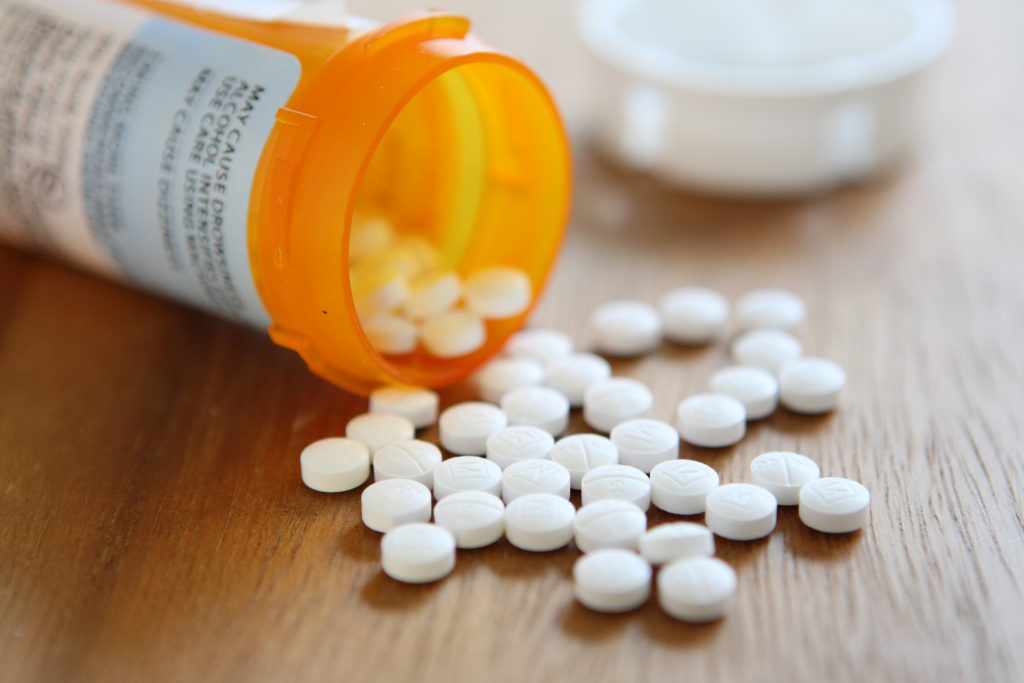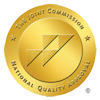Fentanyl is appearing everywhere in the media cycle but you might be asking yourself:
“Why is fentanyl so dangerous?” A record total of 1.7 million fentanyl pills, with a street value of $9 million, was taken off the streets of Arizona as part of a crackdown on drug traffickers by state and federal law enforcement agencies. That is enough to kill half the population in the state of Arizona.
Two milligrams can be fatal in some instances. This may be in Arizona’s backyard today but it’s coming to the rest of the country. Fentanyl is a factor in more than half of overdose deaths. Statistics indicate 42,700 fentanyl overdose deaths in 2020. The U.S. economic cost of opioid use disorders ($471 billion) and fatal opioid overdose ($550 billion) during 2017 totaled $1,021 billion.
Synthetic Opioids vs Natural Opioids
Opioids are a class of drugs made to mimic the effects of opium. Opium is a naturally occurring substance derived from the seed pod of the Asian poppy plant, and it also can be synthetically made.
Natural opioids are those that originate from the opium poppy and include:
- Morphine (the gold standard for treating pain)
- Codeine (used for mild/moderate relief of pain and as a cough suppressant)
Synthetic opioids are those that have been created in a laboratory using chemicals or other ingredients; they include:
- Vicodin (Vicodin contains hydrocodone, which is an opioid used to treat moderate to high levels of pain, but it also includes acetaminophen, which causes liver damage)
- Heroin
What is Fentanyl?
Fentanyl is a synthesized opioid that has gained popularity among drug users looking for an even more potent high than heroin or other illegally sold opioids. As the demand for fentanyl increases, so does the threat it poses to public health. It’s nearly impossible to determine how strong any illicitly produced fentanyl actually is.
Fentanyl can be:
Fentanyl slithers through the illicit street market, introduced in powder form. It has also been found in other drugs, like heroin, meth, cocaine, and pressed pills. Users may become addicted to fentanyl if they use it more than once.
How is Fentanyl Being Trafficked?
Fentanyl is a synthetic opioid that is 50 times stronger than heroin. Why is fentanyl so dangerous? It can kill you in very small doses, especially if you are not aware of what you are taking. According to the DEA, just two milligrams of fentanyl can cause an adult to have respiratory depression or arrest leading to death.
Why would someone want to take this risk with their life? Fentanyl provides a feeling of euphoria similar to heroin but has a faster effect on the brain, which makes many people feel more comfortable taking it. Addiction is a brain disease that leads to compulsive drug seeking and use despite harmful consequences, according to the National Institute on Drug Abuse.
Why is it being trafficked? Fentanyl is cheaper for drug dealers to produce and distribute. Synthetic opioids are profitable. A pill containing fentanyl can sell for $10-$20 whereas heroin only sells for about $4-$10 per hit (not including the price people pay for incarceration and medical treatment). Why is this problem bigger now? In the mid-1990s, China began mass-producing fentanyl, making it both inexpensive and readily available to drug dealers.
Illegal fentanyl, made in labs, is used to produce counterfeit pills that look identical to prescription medication. There is no way of knowing how much fentanyl is in each of these counterfeit pills, making all counterfeit pills extremely dangerous as just a tiny amount of fentanyl can be lethal.
In Arizona, 42% of all overdoses involve fentanyl, and over the last two years, there has been an increase of 1610% in counterfeit pill seizures. Out of all the pills tested in the DEA laboratory, 26% contained a lethal dose of fentanyl.
Why is this a more dangerous game? Drug dealers are cutting the highly potent fentanyl with other drugs to save on costs. This means their customers are taking unknown substances that can be deadly if not handled correctly.
Considering the evolution of technology, drug deals are no longer done on the streets and have switched to online platforms. While teens may use all forms of social media to purchase these pills, Snapchat is the popular platform that gets used the most as it provides anonymity, disappearing content, and doesn’t allow third-party monitoring.
What’s happening on the battlefield against drugs? Consequently, the Arizona Health Care Cost Containment System (AHCCCS), which serves as the Single State Authority, has worked steadily with stakeholders to identify the strategies that would best support substance use disorder primary prevention, intervention, treatment, and recovery services.
The following counties are experiencing the most severe consequences of substance use in Arizona:
- Gila County
- Navajo County
- Mohave County
- Pima County
By December 2020, Arizona (where the state’s proximity to the border provides additional access to illegal substances) reported approximately 2,644 drug overdose deaths up from 1,981 in Dec. 2019 — a 33.5% increase. Fentanyl was involved in more than 60% of overdose deaths during 2020, according to the CDC’s data.
Through the support of members and stakeholder feedback, data, and needs assessment reviews, Arizona has identified initiatives that will enhance substance use disorder primary prevention, intervention, treatment, and recovery services through the SABG. Unfortunately, an increasing number of people residing in Arizona of all ages and in all regions are suffering from untreated mental health issues that are leading to substance use and/or misuse.
Furthermore, integrating Medicaid decreases the reliance on annual discretionary funding to support siloed treatment programs, which has proven to be unsustainable in the fight to reduce drug overdoses.
How is Pain Management Affecting Addiction?
Pain management functions to reduce pain in order to improve the quality of life for an individual. However, in the past few decades, there has been a drastic change in how pain is controlled. Physicians have realized the limitations associated with the use of opioids and are reluctant to prescribe them because they can be addictive when misused.
Pills are sometimes prescribed for off-label uses which means that it is not being used for their intended purpose, but physicians are prescribing them anyways. As a result, prescriptions have increased, causing misuse and addiction rates too.
What Are the Signs and Symptoms of Fentanyl Addiction?
The signs and symptoms of fentanyl addiction are varied from person to person because of the wide range of fentanyl forms and methods of use. However, there are common side effects that do occur when a person is addicted to fentanyl.
Some possible signs include:
- Inability to quit or cut down on the drug use
- Changes in sleep patterns
- Symptoms of withdrawal if not used for a prolonged period of time
- Difficulty concentrating and completing tasks
- Mood swings and irritability
- Agitation or lack of motivation
What are the Withdrawal Symptoms of Fentanyl?
The withdrawal symptoms of fentanyl will vary depending on how long the drug has been used and the method of consumption. Symptoms may not be noticeable for as long as a month after intake has stopped, but other symptoms may begin very quickly.
Some withdrawal symptoms include:
- Vomiting
- Muscle cramping
- Diarrhea
- Cold flashes with goosebumps
- Shaking or tremors
- Intense cravings to use fentanyl again
What are the Signs of Fentanyl Overdose?
Witnessing or experiencing an overdose can be terrifying. The signs of a fentanyl overdose are:
- Unresponsiveness or unawareness
- Pinpoint pupils
- Blue lips and fingernails
- Slowed breathing, no breathing, or irregular breathing
- Low heart rate
Is There Treatment for Fentanyl Overdose?
If you find yourself with the symptoms listed above OR witnessing someone else with these symptoms, call 911 immediately. In cases of a fentanyl overdose, it’s important to do this before administering naloxone because it can make an individual angry and combative when they wake up from an overdose.
Treatment for a fentanyl overdose will depend on the specific symptoms that present themselves. Some treatment options may include intubation or ventilation support if there was a respiratory arrest during an overdose.
What are Treatment Options for Fentanyl?
Detoxification
Detoxification is the first phase of addiction treatment to improve the physical well-being of the patient by ridding their bodies of toxins. This initial phase of treatment is the critical foundation for all future phases. During detox, individuals may experience symptoms such as withdrawal, cravings, and other side effects which can be relieved with medications and therapy if treatment is available.
Medication-Assisted Treatment
Patients who are physically dependent on opioids will also benefit from medication-assisted treatment to relieve cravings, control withdrawal symptoms, and prevent relapse. There are three main forms of medication-assisted treatment currently being used for opioid addiction:
- Methadone
- Buprenorphine (Suboxone)
- Naltrexone (Vivitrol)
Outpatient Treatment
Outpatient treatment for opioid addiction is beneficial for those who can continue to function well in their daily lives. In this form of treatment, patients attend a therapy session once a week and meet with a doctor during the remaining days of the week.
Intensive Outpatient Treatment
An intensive outpatient treatment program provides counseling and support during the day. This allows each individual to hold down a job or take care of family responsibilities while receiving treatment. It is recommended that these individuals meet with counselors three to five times a week. Treatment can be scheduled around work, but it should still be intensive enough to make an impact on addiction.
Inpatient or Residential Treatment
Inpatient or residential treatment provides 24-hour medical care, support from trained staff, and access to medication-assisted treatment. This level of care may be necessary for individuals who have long histories of addiction and have not been able to stay sober on a consistent basis. Withdrawal symptoms are intense and should only be undertaken under close supervision by experienced medical professionals.
Partial Hospitalization
Partial hospitalization (or day programs) are popular with those who struggle to maintain their recovery but are unable to commit to living away from home. The program runs for a set number of hours each day and offers clinical treatment and counseling alongside traditional recovery-type activities—such as group therapy, education, and daily chores. You will also learn how to manage cravings, cope with triggers and identify early relapse warning signs (“relapse triggers”).
Sometimes people can feel pressured into spending time away from home in order to respond better during family conflict or when they’re struggling with addiction urges. Time in a recovery center provides them with time away from these triggers while they focus on treatment.
Dual Diagnosis
A large number of recovering individuals also have other mental health disorders or problems. These are known as “dual diagnoses,” and they can make the person’s addiction even harder to overcome without proper treatment. Dual diagnosis is common for people with long-term substance abuse issues.
Other aspects of dual diagnosis include:
- Depression
- Anxiety
- Psychiatric illness, or conditions that require medication management—like bipolar disorder or schizophrenia.
Drug rehab centers can provide a customized approach to care that takes into account each individual’s dual diagnosis needs, helping them discover any coexisting problems they might not be aware of and helping them recover successfully from both issues at once.
Regular therapy sessions are important for addressing underlying issues which may have contributed to addiction in the first place, including mental health disorders such as depression, anxiety, and bipolar disorder.
They will also help an individual cope with challenges they face after treatment ends—one of the main reasons relapse rates are so high post-treatment. Individual therapy provides each person with personal one-on-one time with a counselor who can offer targeted guidance.
Aftercare Programs
The aftercare plan in place should be followed closely in order to remain sober for good. Aftercare often includes counseling services that help reduce the potential for relapse. If an individual does end up relapsing, it’s important they seek out help right away because addiction doesn’t just go away on its own. Untreated addiction poses serious health risks, including death.
Discover Treatment at Granite Mountain
Why is fentanyl so dangerous? The evidence-based reasons could flood the streets. Fentanyl addiction can introduce devastating consequences and fatal overdose. The world at large is struggling to keep up with how dangerous fentanyl is. The preventative measures issued by federal and local levels can help guide a recovering person in the right direction.
Arizona has witnessed the death grip of fentanyl. Granite Mountain is determined to be a lifeboat in this storm of synthetic opioids. If you or a loved one are struggling with opioid addiction, please reach out to our facility.
References:
https://www.dea.gov/factsheets/fentanyl
https://harmreduction.org/issues/fentanyl/
https://www.cdc.gov/mmwr/volumes/70/wr/mm7015a1.htm
https://www.ama-assn.org/system/files/issue-brief-increases-in-opioid-related-overdose.pdf
https://www.yourvalley.net/stories/us-arizona-logged-record-drug-overdose-deaths-in-2020,247486
https://www.azahcccs.gov/PlansProviders/Downloads/RFPInfo/YH20/ARPAFundingPlan2021(SA)_083021.pdf








